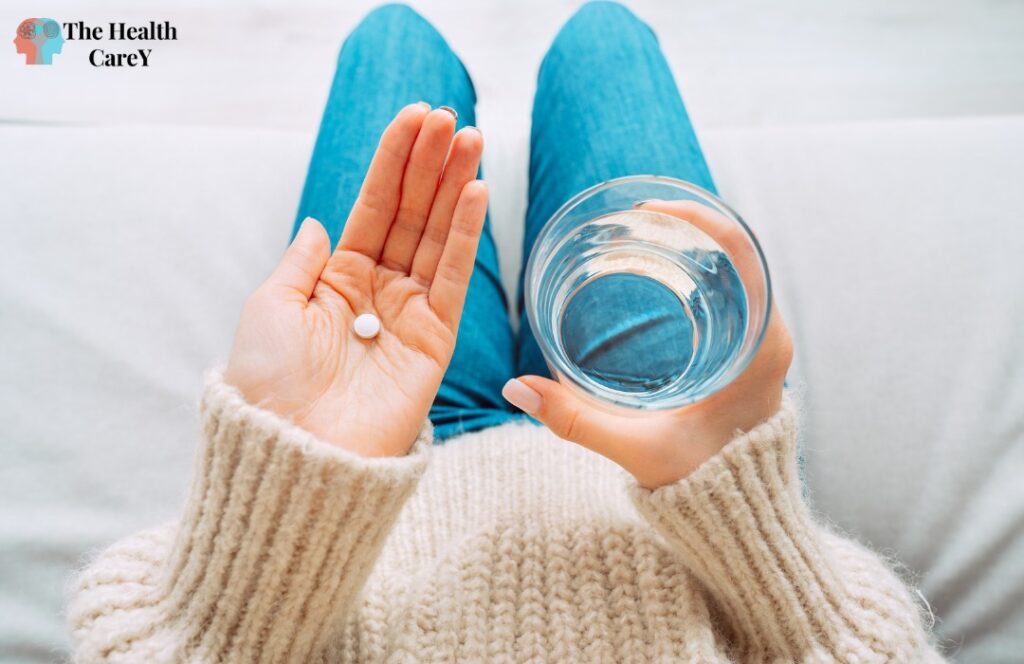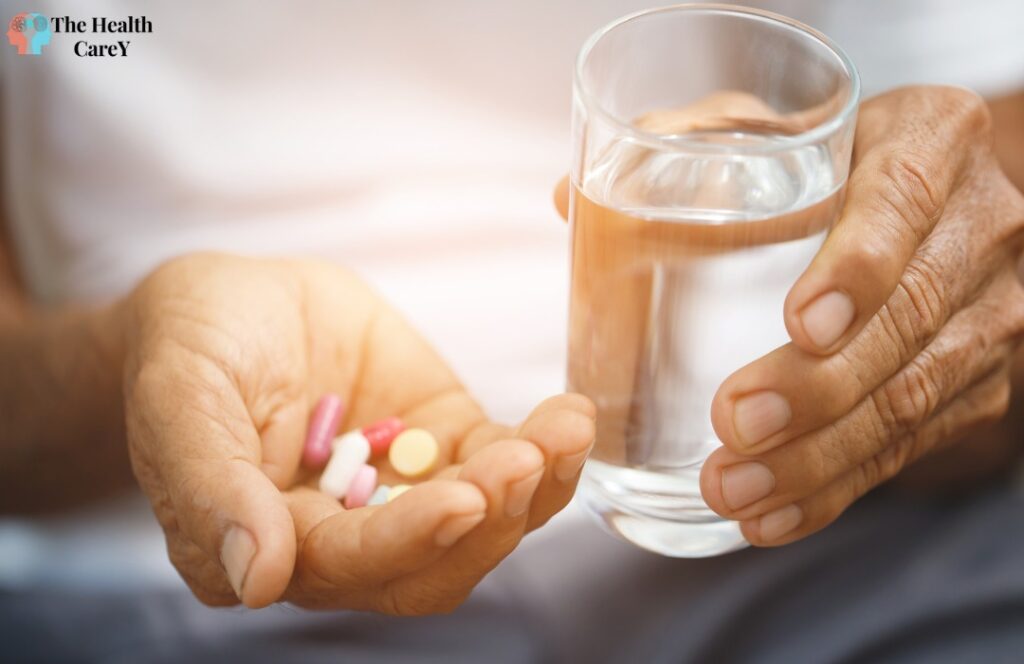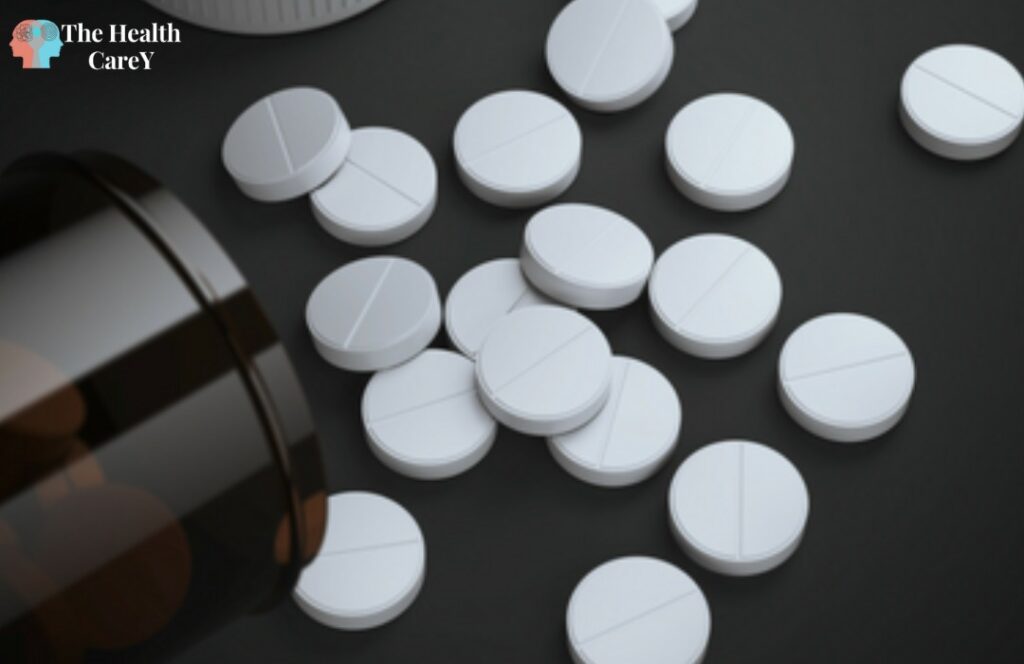When taking furosemide, a diuretic medication, it’s essential to be mindful of your diet. Certain foods and drinks can interact with furosemide and affect its effectiveness. In some cases, certain foods may even worsen the side effects of the medication. Therefore, knowing what foods to avoid when taking furosemide is essential.
One of the main things to avoid when taking furosemide is high-sodium foods. This is because furosemide works by helping your body get rid of excess fluid and sodium. Consuming high-sodium foods can counteract the effects of the medication and make it less effective. Additionally, high-sodium foods can worsen fluid retention and lead to more swelling.
Another thing to avoid when taking furosemide is certain herbs. Some herbs, such as dandelion and parsley, have diuretic properties that can interact with furosemide and cause dehydration. Licorice is another herb that can negatively interact with the medication. It’s important to talk to your doctor or a registered dietitian if you need help deciding which herbs to avoid when taking furosemide.
Key Takeaways
- High-sodium foods should be avoided when taking furosemide.
- Certain herbs, such as dandelion and parsley, should be avoided when taking furosemide.
- It’s important to talk to your doctor or a registered dietitian if you need help deciding what foods to avoid when taking furosemide.
Understanding Furosemide
If you have been prescribed furosemide, also known as Lasix, it is likely because you are experiencing excess fluid retention in your body. Furosemide is a type of diuretic, specifically a loop diuretic, which helps your body get rid of excess water and salt by increasing urine output.
Furosemide works by blocking the reabsorption of sodium and chloride in the kidneys, which causes more water to be excreted in the urine. This can help alleviate swelling, shortness of breath, and high blood pressure. It is often used to treat conditions like heart failure, liver disease, and kidney disease.
It is important to take furosemide precisely as prescribed by your doctor. Please only take what is instructed; consult your doctor first before stopping. It is also important to be aware of certain foods and drinks that can interact with furosemide and potentially reduce its effectiveness.
Some foods and drinks to avoid when taking furosemide include those high in sodium, such as processed foods, canned goods, and fast food. Alcohol should also be avoided, as it can increase the risk of dehydration and lower blood pressure. Additionally, herbs such as dandelion, uva ursi, and juniper may have a diuretic effect and should be avoided while taking furosemide.
Maintaining a balanced and healthy diet while taking furosemide is also important, as certain nutrients such as potassium and magnesium can be lost through increased urine output. Your doctor may recommend increasing your intake of foods rich in these nutrients, such as bananas, spinach, and nuts, or may prescribe supplements if necessary.
Understanding how furosemide works and how to properly manage your diet while taking it can help ensure its effectiveness and improve your overall health.
How Furosemide Works
Furosemide is a diuretic medication used to treat high blood pressure and excess fluid in the body. It works by increasing the amount of urine produced by the kidneys, which helps to remove excess fluid from the body. Furosemide is a loop diuretic that works on a specific part of the kidney called the loop of Henle.
The loop of Henle is responsible for reabsorbing sodium and chloride from the urine back into the bloodstream. By inhibiting the reabsorption of these electrolytes, furosemide prevents the kidneys from reabsorbing water, resulting in increased urine production. This helps to reduce the amount of fluid in the body, which can help to lower blood pressure and reduce swelling caused by oedema.
Furosemide is often used to treat conditions such as heart failure, kidney disease, and liver disease, which can cause excess fluid retention in the body. It can also be used to treat high blood pressure, which can put a strain on the heart and blood vessels.
It is important to note that taking furosemide can also lead to dehydration if too much fluid is lost through urine. Therefore, drinking plenty of water and avoiding excessive sweating when taking furosemide is important. Your healthcare provider may also adjust your dosage or monitor your electrolyte levels to ensure you are not experiencing any adverse effects.

What Foods to Avoid When Taking Furosemide
If you are taking furosemide or Lasix, it is important to watch what you eat. Furosemide is a diuretic medication that helps your body eliminate excess water and salt. However, certain foods can interfere with its effectiveness or cause unwanted side effects.
Here are some foods to avoid when taking furosemide:
High-Sodium Foods
Foods high in sodium can make furosemide less effective and may even worsen the conditions the medication is intended to treat, such as high blood pressure and heart failure. Some examples of high-sodium foods include:
- Processed meats (such as bacon, sausage, and deli meats)
- Canned soups and vegetables
- Frozen meals
- Fast food
- Snack foods (such as chips and pretzels)
- Condiments (such as ketchup, soy sauce, and salad dressings)
Caffeine
Caffeine is a natural diuretic that can increase urine output and cause dehydration. Combined with furosemide, it can lead to excessive fluid loss and electrolyte imbalances. It is best to limit or avoid caffeine-containing beverages such as:
- Coffee
- Tea
- Soda
- Energy drinks
Alcohol
Alcohol can also act as a diuretic and increase urine output. However, it can also interfere with the effectiveness of furosemide and lead to dehydration. Additionally, alcohol can worsen liver and kidney function, making it harder for your body to eliminate furosemide. It is best to avoid or limit alcohol consumption while taking furosemide.
Certain Herbs
Some herbs have diuretic properties and should be avoided while taking furosemide. Dandelion, uva ursi, juniper, buchu, hibiscus, and parsley are all herbs that may have a diuretic effect, so you should avoid them while taking furosemide. Licorice is another herb that might negatively interact with furosemide.
You must talk to your doctor or pharmacist about other medications, supplements, or herbal remedies to ensure they do not interact with furosemide.

The Role of Diet in Taking Furosemide
When taking furosemide, it is important to be mindful of your diet. Certain foods and beverages can interact with the medication, affecting its effectiveness or causing unwanted side effects. Here are some dietary considerations to keep in mind:
Sodium Intake
Furosemide is a diuretic medication that helps your body eliminate excess fluid by increasing urine output. Sodium can cause your body to retain water, so it is important to watch your intake of high-sodium foods. This includes processed foods, canned goods, and foods naturally high in sodium, such as pickles, olives, and cheese.
Potassium Intake
Furosemide can cause your body to lose potassium, an important electrolyte that helps regulate fluid balance and muscle function. While avoiding potassium-rich foods such as bananas and other fruits and vegetables is important, ensuring you are getting enough potassium in your diet. Good sources of potassium include whole grains, nuts, and seeds.
Fluid Balance and Hydration
It is important to maintain proper fluid balance and hydration while taking furosemide. This means drinking enough water and other fluids to prevent dehydration and being mindful of your fluid intake if you have certain medical conditions such as heart failure or kidney disease. Your healthcare provider can guide you on how much fluid you should consume.
Other Dietary Considerations
In addition to watching your sodium and potassium intake, there are other dietary considerations to consider when taking furosemide. For example, alcohol can increase the risk of dehydration and interact with the medication, so it is best to avoid or limit alcohol consumption. Certain herbs, such as dandelion and parsley, can also have a diuretic effect, so it is best to avoid these while taking furosemide.
By being mindful of your diet and making adjustments as necessary, you can help ensure that furosemide is working effectively and safely for you.
Potential Side Effects of Furosemide and Food Interactions
When taking furosemide, it is important to be aware of the potential side effects and food interactions. Furosemide is a diuretic medication commonly used to treat high blood pressure, fluid retention, and kidney disorders. However, it can also cause various side effects that certain foods may exacerbate or trigger.
Some common side effects of furosemide include dizziness, lightheadedness, weakness, nausea, vomiting, dry mouth, confusion, irregular heartbeat, and constipation. These side effects may be more likely to occur if you are dehydrated or have an electrolyte imbalance, so staying hydrated and maintaining a balanced diet is important.
Certain foods can also interact with furosemide and potentially increase the risk of side effects. For example, foods high in sodium can cause you to retain more fluid, which can counteract the effects of furosemide. Limiting your intake of high-sodium foods such as processed foods, fast food, and salty snacks is important.
Alcohol can also interact with furosemide and increase the risk of side effects such as dizziness and lightheadedness. It is important to avoid or limit your alcohol intake while taking furosemide.
In addition, some herbs and supplements may interact with furosemide and cause side effects. For example, dandelion, uva ursi, juniper, buchu, hibiscus, and parsley are all herbs that may have a diuretic effect and should be avoided while taking furosemide. Licorice is another herb that might negatively interact with furosemide.
Overall, it is important to be aware of the potential side effects and food interactions when taking furosemide. Maintaining a balanced diet and avoiding certain foods and substances can minimize the risk of side effects and ensure your medication is as effective as possible.

The Importance of Potassium
When taking furosemide, it is important to be mindful of your potassium levels. Furosemide is a diuretic that can cause the body to lose potassium, an essential mineral that helps regulate fluid balance, muscle contractions, and nerve function.
Low potassium levels hypokalemia, can cause various symptoms, including muscle weakness, cramping, fatigue, and irregular heartbeat. To avoid these symptoms, consuming potassium-rich foods or taking a potassium supplement while taking furosemide is important.
Fruits and vegetables are excellent sources of potassium. Bananas and oranges are exceptionally high in potassium and can be a great snack option. Other potassium-rich foods include leafy greens, tomatoes, potatoes, sweet potatoes, and avocados.
In addition to potassium, magnesium is another vital mineral for maintaining healthy muscle function. Nuts, seeds, and dark chocolate are all good sources of magnesium and can be a healthy addition to your diet.
Talking to your doctor before taking any potassium supplements is essential, as they can interact with certain medications and may not be appropriate for everyone. Your doctor can also monitor your potassium levels and adjust your medication or diet to maintain a healthy electrolyte balance.
Herbs and Furosemide
When taking furosemide, it is essential to know certain herbs that may interact negatively with the medication. Some herbs have diuretic effects, which can increase the risk of dehydration and electrolyte imbalances when taken alongside furosemide.
Dandelion, hibiscus, parsley, uva ursi, juniper, and buchu are all examples of herbs with potential diuretic effects. You should avoid these herbs while taking furosemide to prevent any adverse effects.
Another herb to be cautious of is liquorice. Licorice root contains glycyrrhizic acid, which can lower your blood potassium levels. This can be dangerous when taking furosemide, as the medication can also lower potassium levels.
Speaking with your doctor or pharmacist before starting furosemide is essential if you take herbal supplements or remedies. They can advise whether it is safe to continue taking these supplements alongside the medication.
Avoiding herbs with diuretic effects and consult a healthcare professional before taking herbal supplements while on furosemide.
Hydration and Furosemide
When taking furosemide, it is important to maintain proper hydration levels. Furosemide is a diuretic, also known as a “water pill,” which means it can cause an increase in urine output and lead to dehydration if not properly managed. Here are some tips to help you stay hydrated while taking furosemide:
- Drink plenty of water: It is recommended to drink at least 8-10 glasses of water per day while taking furosemide. This will help replace lost fluids through increased urine output and prevent dehydration.
- Avoid excessive fluid intake: While it is important to stay hydrated, consuming too much fluid can also be harmful. Your healthcare provider will guide you on how much fluid you should consume based on your needs.
- Monitor your urine output: Keep track of how much urine you produce throughout the day. If you notice a significant decrease in urine output, it could be a sign of dehydration, and you should contact your healthcare provider.
- Pay attention to thirst: Thirst is your body’s telling you you need more fluids. Drinking water or other fluids is important to prevent dehydration if you feel thirsty.
- Avoid alcohol and caffeine: Both alcohol and caffeine can increase urine output and lead to dehydration. It is best to avoid or limit these beverages while taking furosemide.
Following these tips can help prevent dehydration while taking furosemide and maintain proper hydration. Always consult your healthcare provider for personalized guidance on fluid intake and management.

Sunlight and Furosemide
When taking furosemide, being mindful of your exposure to sunlight is important. Furosemide can make your skin more sensitive to the sun, increasing your risk of sunburn and skin damage. This is especially true if you take a high dose of furosemide or take it for an extended period.
To minimize your sunburn and skin damage risk, you should protect your skin from the sun. This includes wearing protective clothing, such as long-sleeved shirts and hats, and broad-spectrum sunscreen with an SPF of at least 30. You should also avoid sun exposure during peak hours, typically between 10 a.m. and 4 p.m.
If you get sunburned while taking furosemide, it is important to soothe your skin and promote healing. This may include taking cool baths or showers, using aloe vera gel or other soothing creams, and taking over-the-counter pain relievers if necessary.
In addition to protecting your skin from the sun, it is important to stay hydrated while taking furosemide. This medication can cause you to lose fluids and electrolytes, leading to dehydration. To prevent this, drink plenty of fluids, especially water, and eat a healthy diet of fruits and vegetables.
Furosemide and Health Conditions
When taking furosemide, it is important to be aware of certain health conditions that may be affected by the medication. Here are some of the conditions you should be mindful of:
High Blood Pressure
Furosemide is often prescribed to help lower blood pressure. However, excessive sodium consumption can worsen problems that furosemide is intended to treat, like high blood pressure. It is important to limit your sodium intake while taking furosemide.
Heart and Edema
Furosemide is given to help treat fluid retention (oedema) and swelling caused by congestive heart failure, liver disease, kidney disease, or other medical conditions. It is important to follow your doctor’s instructions carefully and take the medication as prescribed to manage these conditions.
Kidney Disease
Furosemide is a diuretic that helps the kidneys eliminate excess fluid and salt from the body. However, if you have kidney disease, your kidneys may not be able to handle the increased workload. Your doctor will monitor your kidney function regularly while you are taking furosemide.
Heart Failure and Stroke
Furosemide is often used to treat heart failure and prevent strokes. However, excessive diuresis can lead to electrolyte imbalance, which can be dangerous for people with heart failure. Your doctor will monitor your electrolyte levels while you are taking furosemide.
Liver Disease
Furosemide is primarily eliminated through the kidneys but can also be eliminated through the liver. If you have liver disease, your liver may not be able to stop furosemide as effectively, which can lead to increased side effects. Your doctor may need to adjust your dosage or monitor you more closely if you have liver disease.
Congestive Heart Failure
Furosemide is often used to treat congestive heart failure, but following your doctor’s instructions is essential. Too much furosemide can lead to excessive diuresis and electrolyte imbalance, which can be dangerous for people with congestive heart failure.
Electrolyte Imbalance
Furosemide can cause electrolyte imbalances and deficient potassium, sodium, and magnesium levels. Your doctor will monitor your electrolyte levels regularly while taking furosemide and may recommend supplements or adjustments to your diet to help maintain healthy electrolyte levels.
Brain
Furosemide can cross the blood-brain barrier and may cause side effects like dizziness, headache, and confusion. If you experience any of these symptoms, contact your doctor immediately.
It is essential to be aware of these health conditions and to work closely with your doctor to manage them while taking furosemide. Following your doctor’s instructions carefully and monitoring your health regularly can help ensure that furosemide is safe and effective.
Frequently Asked Questions
What are some foods that can interact with diuretics?
Some foods that interact with diuretics include grapefruit, alcohol, and caffeine. Grapefruit can increase the amount of medication in your bloodstream, which can lead to an overdose. Alcohol and caffeine can cause dehydration, which can make diuretics less effective.
How much water should I drink while taking furosemide?
It is essential to drink enough water while taking furosemide to prevent dehydration. Your healthcare provider will recommend how much water you should drink based on your needs. It is important to follow their instructions carefully.
What are the side effects of suddenly stopping furosemide?
Stopping furosemide suddenly can cause several side effects, including swelling, increased blood pressure, and fluid retention. Talking to your healthcare provider before stopping furosemide or changing your dose is essential.
Can I eat bananas while taking furosemide?
Bananas are high in potassium, which can interact with furosemide. Your healthcare provider may recommend limiting your intake of potassium-rich foods while taking furosemide. It is essential to follow their instructions carefully.
Should I drink a glass of milk with furosemide?
Drinking milk with furosemide is not recommended. Milk can decrease the absorption of furosemide, making it less effective. It is important to take furosemide as directed by your healthcare provider.
What foods are high in potassium?
Foods high in potassium include bananas, avocados, spinach, sweet potatoes, and tomatoes. If you are taking furosemide, your healthcare provider may recommend limiting your intake of potassium-rich foods. It is important to follow their instructions carefully.
Also Read:
Foods to Avoid with High Alkaline Phosphatase
Ozempic Foods to Avoid for Optimal Results
Foods to Avoid While Taking Cymbalta
What is the recommended dose of Cephalexin for a skin infection?





















